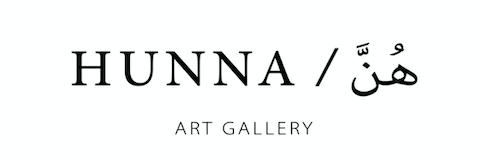Visual art in Kuwait has come a long way since 1936, when the first art scholarships were granted in the country and art became a subject in primary schools.
Today the young oil-rich nation, suspended between modernity and tradition, is home to a new generation of artists, experimenting with innovative forms.
The country's first art exhibition was held in 1943 and saw the participation of the country's first visual artist and pioneer of portraiture, Mojib al-Dousari (1921-1956). And in 1969, Kuwaiti siblings Najat and Ghazi Sultan established the Sultan Gallery in Kuwait City, the first Arab art space in the Gulf.
It was around this time that the country saw the rise of its own homegrown art movement named Circulism - an art form relying on circular and curved lines based on philosophy, spirituality and science - created by Kuwaiti artist Khalifa al-Qattan (1934-2003).
(...)
The past decade has also seen a new wave of talent bring dynamism and diversity to the art scene. Most of these younger artists are self-taught, pursuing their education in other fields such as architecture, design or engineering because of limited access to specialist cultural institutions. Though these institutions exist, says artist Aseel AlYaqoub, they are “inconsistent, bureaucratic, limited and conservative”.
Yet with the help of digital developments and social media, this new generation too have found their audience.
(...)
Amani al-Thuwaini
Born in the Ukrainian city of Kharkiv, half-Ukrainian, half-Kuwaiti multidisciplinary artist and designer Amani al-Thuwaini, 31, began drawing as a child, influenced by Soviet cartoons, matryoshkas (Russian dolls), and fairytales.
Her eclectic and bold mixed media work addresses consumerism, the way people relate to luxury, and how they can lose their individuality by investing in material objects. With a high level of purchasing power in a small population, GCC countries are an attractive market for luxury brands.
“Shopping is part of the region’s culture and it has always been part of Kuwait’s identity, even though the definition of what is luxurious changed throughout time with changes in trade and market trends.”
Featured in solo and group exhibitions in Kuwait, London and Italy, much of al-Thuwaini’s work is in largely wall-based sculptural forms. Modernism, fetishism, gender and power manifest in hybrid objects.
They also focus on wedding and dowry traditions and how they evolved in Kuwait. Recently she even launched her own business Dazzalab, which offers creative options for dowries.
Her 2017 wall installation Elibelinde – named after the Turkish word for “hands on hips”, symbolising fertility and motherhood, combines cultural symbols of marriage through different periods of history. The geometrical figure has a buqsha on her head - a bundle of fabrics considered to be one of the earliest forms of dowry in the Middle East and Islamic culture. It appears here in the form of a pumpkin carriage as a reference to the Cinderella fairytale.
The ritual of presenting the dowry to the bride is explored in the wall installation Dazza, (2016), the name derived from the Arabic verb to send. A centuries-old tradition in Kuwait, the dowry has been modernised from a bundle of fabric to include international designer goods among the gifts.
On the wall installation, sadu weaving (embroidery in geometrical shapes traditionally hand-woven by Bedouins) flanks a central leather section resembling an oversized Chanel bag. The iconic French brand logo is replaced by the Arabic word Dazza in gold colour Plexiglass.
“The goal behind the work is to open our eyes to our day to day rituals and traditions which are taken for granted and questioning how those change with our constantly changing world”, al-Thuwaini says.
---
Continue reading on Middle East Eye.

